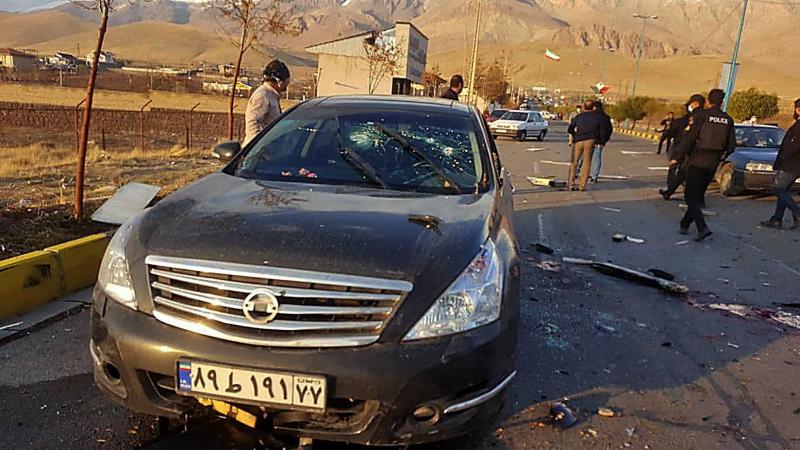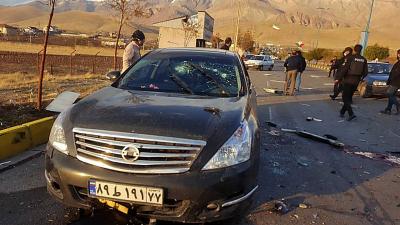Israel has executed three significant operations over the past eighteen months against Iranian nuclear sites. Up to a thousand Mossad agents participated in these attacks, which were carried out with high precision using advanced weaponry, including drones and quadcopters, as well as spies inside the most dangerous sites in Tehran, specifically its nuclear program facilities, according to an exclusive report by the American newspaper "New York Post."
While negotiators for U.S. President Joe Biden are attempting to salvage a disastrous deal in Vienna, Israel is taking matters seriously. According to the paper, Israeli Prime Minister Naftali Bennett has recently focused on a new policy towards Tehran: "responding to the aggression of Iran-backed militias with secret strikes on Iranian soil," relying on the extensive capabilities that Mossad has built within Iran in recent years.
#### Assassination of Fakhrizadeh
In February, seven months before the "New York Times" revealed the same story, the "Jewish Chronicle of London" reported how Israeli spies killed nuclear scientist Mohsen Fakhrizadeh using a remote-controlled machine gun. The "New York Post" stated, "We can now reveal the secrets of Israel's latest triple attack on Iran's nuclear ambitions."
#### Natanz Facility
The three-part sabotage efforts began on July 2, 2020, with a mysterious explosion at Iran's Advanced Centrifuge Research and Development Center (ICAC) in Natanz, one of the secure nuclear sites spread across Iran. Initially, the Iranians were baffled, as if the building had exploded by itself. But the shocking answer emerged: while Iranian officials were renovating the facility in 2019, Israeli agents posed as construction merchants and sold them building materials filled with explosives. A year later, these explosives were detonated by Tel Aviv. Although this caused considerable damage, the Natanz facility remained intact.
#### Collaboration with Tehran's Nuclear Scientists
Beneath a protective layer of 40 feet of concrete and steel lies the inner sanctum of Hall A1000 underground, which housed up to 5,000 centrifuges working day and night to bring the Iranian regime closer to nuclear weapon capabilities. The second phase of the plan began when Mossad spies contacted up to 10 Iranian scientists with access to this hall and convinced them to switch sides, leading them to believe they were working for international defectors rather than Israel. Remarkably, the scientists agreed to sabotage the highly guarded facility.
Their motivations varied. An informed Israeli source stated, "Mossad discovered what they desperately wanted in their lives and offered it to them, and there was an inner circle of scientists who knew more about the operation, and an outer circle that assisted them but had less information."
However, how explosives were smuggled into the fortified compound remains a mystery. It was achieved through two methods. First, a drone flew within the airspace and delivered the bombs to a predetermined location for the scientists to collect, followed by a smuggling operation. According to the Israeli source, "Let's assume you wanted to get explosives into Natanz. How would you do that? For example, consider how the people working there need to eat. You could put explosives in the truck that delivers food to the cafeteria, and the scientists could collect them once they arrive. Yes, you could do that."
The plan succeeded as the scientists assembled the bombs and installed them in the facility. In April, after Iran announced it had begun using advanced IR-5 and IR-6 centrifuges in the underground hall and in stark violation of its nuclear commitments, the explosives were detonated. The explosion indeed destroyed the secure power system, causing a blackout. Ninety percent of the centrifuges were destroyed, halting operations at the facility for up to nine months. The scientists vanished immediately, and all are alive and well today.
#### Explosion at Karaj Facility
Mossad then shifted its focus to the production of centrifuges themselves to disrupt the regime's attempt to restore the Natanz facility. The operation moved to Karaj, located 30 miles northwest of Tehran, where the Iranian Centrifuge Technology Company (TESA) is situated.
In the preceding months, a team of Israeli spies and their Iranian agents smuggled an armed quadcopter weighing the same as a motorcycle, as confirmed by the source, piece by piece until it was time for its use. On June 23, the team assembled the pieces and transported them to a location 10 miles from the TESA plant. Mossad launched it, targeting the facility and causing a large explosion before the drone returned to the launch site for further use.
Notably, these operations were carried out while negotiations were ongoing in Vienna. The Mossad operations were executed without international cooperation, particularly without American collaboration, according to the report.




